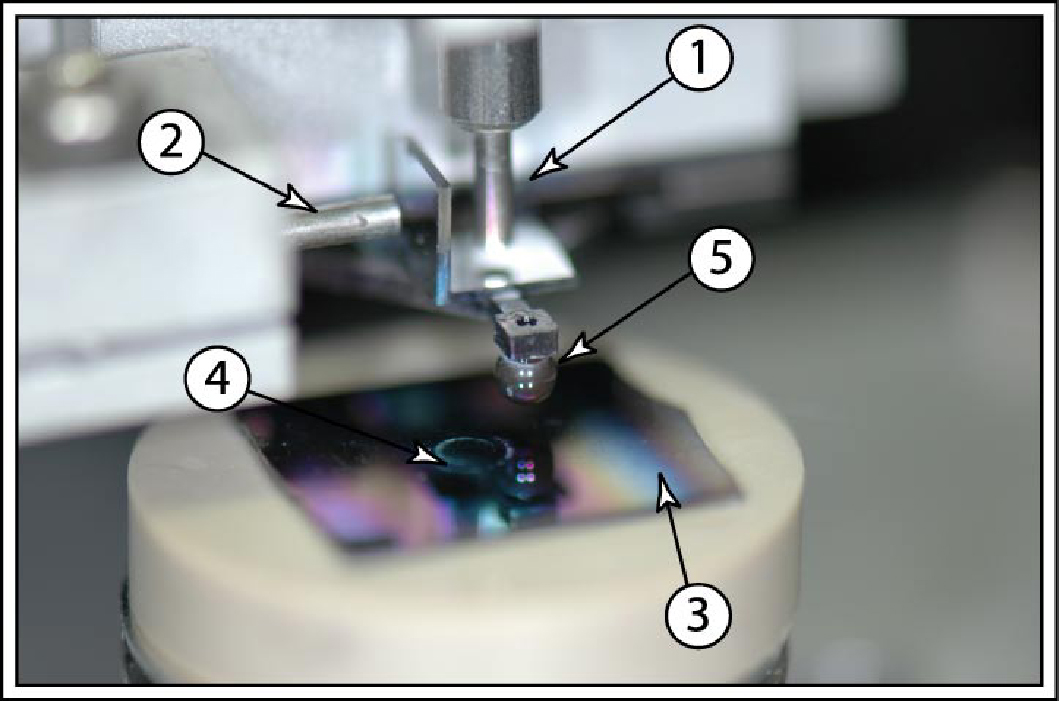Low-friction and long-wearing diamond films
Diamond is the hardest known material and has been used for years to coat high-performance cutting and grinding tools. However, the remarkably low friction and wear of diamond, particularly in humid environments, makes it an ideal material for coating the interface between moving parts. To exploit these unique qualities, diamond and diamond-like films are being developed for use in microelectromechanical systems (MEMS).1, 2 The high strength, inert surface, low friction, and high wear tolerance of these films also makes them attractive for use in scanning probe-based lithography tips and nanoimprint lithography molds.
The first diamond films developed had large (micron-sized) grains. While advantageous for abrasion, the resulting high friction and wear3 were undesirable for most other applications. Recent developments in growth techniques have produced ultrasmooth diamond films with grain sizes less than 5nm. These films are termed ultrananocrystalline diamond (UNCD) and have surface roughness values nearly 3 orders of magnitude lower than those used in previous studies. They have also demonstrated some of the lowest-recorded friction coefficients of any nonlubricated material, measuring as low as 0.002 in our lab (see Figure 1).

Conflicting explanations for the low friction of diamond have been postulated over the years. Some thought graphite (the energetically stable form of carbon under ambient conditions) was formed during sliding, while others proposed surface passivation (when surface bonds broken during sliding are terminated by interacting with molecules from the environment).4 We resolved this question by examining a UNCD-coated surface after being worn down by rubbing a UNCD-coated sphere against it. Visualized using photoelectron emission microscopy, which measures the chemical bonding state at the material's surface with a spatial resolution less than 50nm, the worn region was still overwhelmingly in the diamond phase, and no graphite was detectible. However, oxygen was found to have bonded to some of the carbon atoms, suggesting that broken carbon bonds were passivated by water molecules.5 This was observed even when there was only a 0.8% relatively humidity in the environment. The wear was also extremely low. In the case of 0.1 Newtons of applied load at 1% relative humidity, the amount of wear corresponded to two atomic layers being removed for every pass of the ball over the surface (see Figure 2). Provided there is a sufficient amount of a passivating species (such as water) available, it appears that smooth diamond surfaces can exhibit exceptionally low friction and wear.
Ultimately, as water concentrations become lower, friction and wear increase. Our latest work indicates that, below a critical relative humidity, the transition to high friction (a friction coefficient of approximately 0.6) and wear is extremely sharp. The next challenge will be to fully determine the limits of low friction and wear behaviors and to engineer films that exhibit excellent performance under a broader range of conditions. UNCD films have already started to appear in commercial applications (e.g., pump seals and atomic force microscope cantilevers6). With further experimentation, our understanding of the fundamental mechanisms that drive the tribological performance of diamond films will substantially broaden their use.




